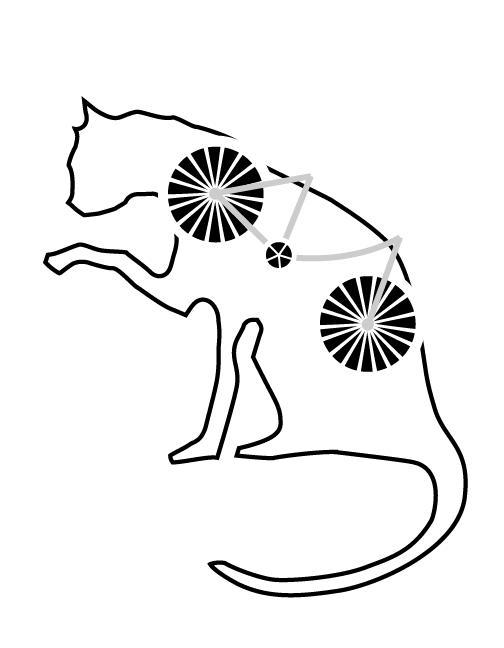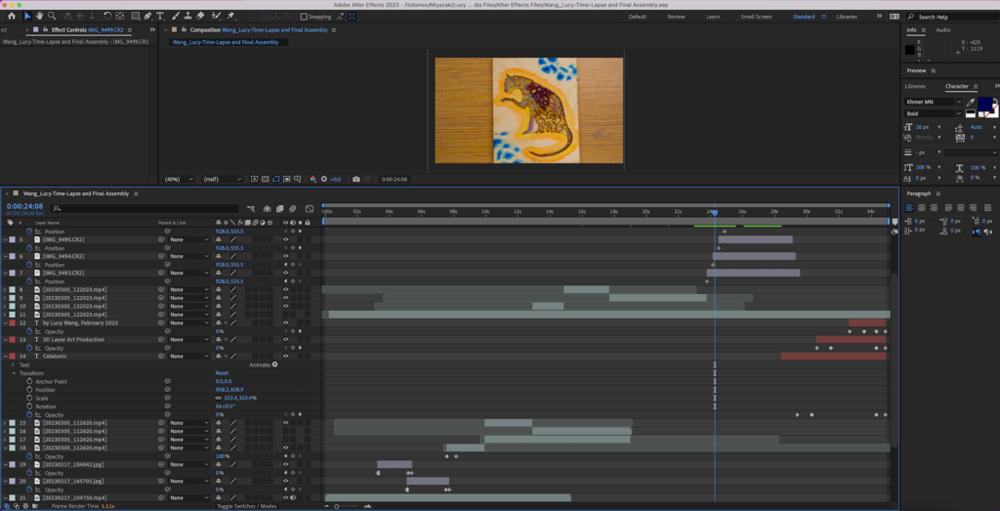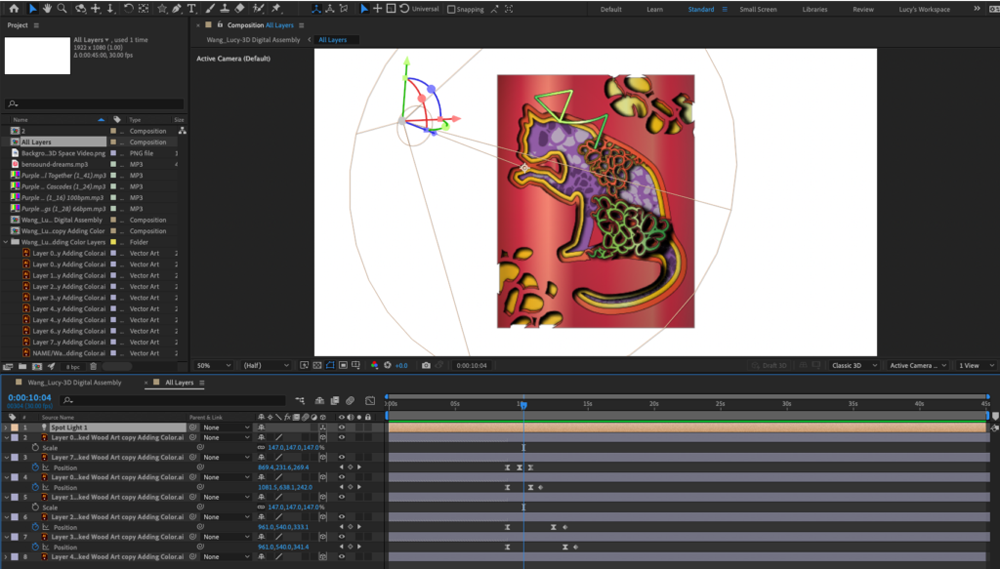Introduction
The plot of my worldbuilding narrative has many layers, as does my Digital Media visual project made for it: multilayer art. Seniors had several options for what project to create, including paper lightboxes and stacked wood art. I chose to create a stacked wood art, which challenged me to think in terms of how negative space contributes to a design.
Design process
Here are my hand drawn rough sketches for ideas on what to make.
I was first inspired by a piece of chalcedony (a grape-like variety of quartz in shape) I saw on display at the Harvard Natural History Museum in January.
But I didn’t know what to make from this pattern, so I came up with a sketch of bicycle wheels and a clock within a cat’s silhouette that I could imbue deeper meaning into. I thought this better represented my worldbuilding story by highlighting our feline-like main character and the time crunch of the plot.
One concept behind making a stacked wood art piece was to adjust the size of layers depending on their distance from you to emphasize its 3D form.
Before digitizing my design, I followed Mr. Flo’s tutorials and learned to do this in Illustrator: duplicating layers and changing stroke width to the outside of the lining, then expanding the appearance of the new form to create a true shape from it.
Here below is an example of what layering looks like. The colors each belong to a distinct layer.
.
.
.
We also had to join paths of designs to have them compatible for laser-printing. Below are screenshots from my interface as I made all the lines in a layer into a continuous form, and expanded them for a new shape.


My design evolved quite interestingly. I like how this series of PNGs show the increasing complexity of the design components:



Finally, this screenshot below shows my final design in Adobe Illustrator with all layers turned on and all strokes thick enough to see (1pt width).
assembled project
Here is my fully painted and assembled stacked wood art! Click on the image to view it in full size!
I took this photograph of the wood art propped against a great pot in my yard, in which a Japanese maple tree lives. I felt the deep night colors of the pot along with the vibrant moss covering the pebbled ground created a well-fitting contrast with the warmer red tones of the wood art.
Video productions
I made videos showing the assembly process of my wood art, both in the physical world and digital 3D space!
1. Time-lapse video of assembly and footage of final assembled piece with a moving camera to show that its stacked layers of 2D pieces to give a 3D effect.
I made this video in After Effects! Here is a screenshot showing my workspace and all the layers involved:
2. A video of my digital art layers from Illustrator, displayed in 3D space to show how they are stacked to produce the final piece.
I made this video in After Effects as well. This interface screenshot below shows the virtual spotlight that I carefully positioned to cast shadows behind each layer.
Artist statement
Title: Catatonic
I named this project ‘Catatonic’ as a play on words referring to the cat’s figure as well as to share the theme of dysfunctionality in my worldbuilding narrative, in which a fungus takes over a community of sophont species partitioned into specific social roles.
When I began brainstorming what I wanted to make, I was inspired by a mass of botryoidal (grape-like) chalcedony quartz I saw at the Harvard Natural History Museum. I drew an outline of its shape to represent the imaginary fungus in my narrative. Later on, I incorporate the fungus within the figure of a cat—one of the main characters of my narrative—to show its infiltration over the body. I decided to place fungal forms into opposing corners of the wood layers as a way of framing the character, and I also created etchings of the pattern onto my behind-most layer as a visual for the background. This project challenged me to think in negative space.
After working on creating the 3D digital production showing how the layers fit together in Adobe After Effects, I better understand how to create the special effects that show up in popular productions, like a moving spotlight creating shadows behind text, or the illusion of blocky letters shattering into pieces.






